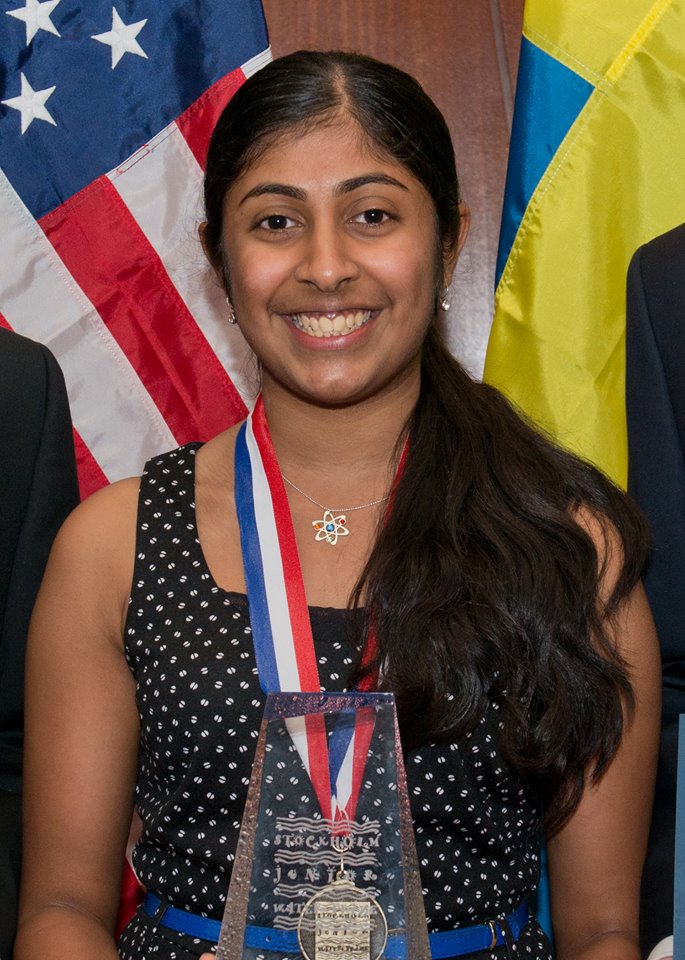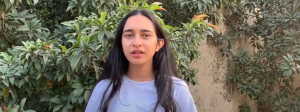(May 25, 2024) Each summer New Hampshire-based Deepika Kurup along with her family travelled to India and the only way to beat the scorching heat was to drink plenty of water. But her parents always warned her to have only boiled or bottled water. “Because unlike in America where I can open on the tap and get clean, portable drinking water, water in India is often contaminated,” said Deepika in her TEDx Talk, adding that not everyone is fortunate enough to have access to clean water like her. She would often wake up to scenes of people queuing up outside her grandparents’ home in India to collect water in buckets from a tap. “I saw children my age filling up plastic bottles with this dirty water from streams on the roadside. Watching these kids forced to drink water that I thought was too dirty to touch changed my perspective of the world,” added the changemaker who was compelled to find a solution. Eventually, she came up with a water purification system – a cement-like composite material activated by sunlight, drastically diminishing bacteria levels in water – an innovation that won her the title of America’s Top Young Scientist.

Global water crisis
“I wanted to learn why these kids lacked water – a substance essential for life. I found that we are facing a global water crisis,” said the girl who is currently studying at Harvard University. It is no secret that three-fourths of the earth is surrounded by water, but not many know that only 2.5 percent is freshwater, of which only 1 percent is available for human consumption. According to the UN World Water Development Report 2023, two billion people lack safe drinking water. Moreover, people in Africa and South Africa were the most affected due to the arid environment.
Moreover, she found that lack of access to clean water for girls meant not attending schools during their periods. “So water also affects women’s health and … how women can contribute to the economy because instead of spending time with their family and instead of spending time working and raising money, women have to walk hours on end every day to go collect water,” she said in an interview, adding, “That definitely is not something that I used to see in the United States and so I wanted to do something to change that.” Growing up in Nashua, New Hampshire, she found her support system in her father who is a civil engineering professor who always encouraged her interest in science.


Finding an affordable solution
She was only 14 when she began working on the solution and wanted to combine her passion for science, technology, engineering, and maths. She converted her garage into a lab and started sifting through reams of journals on research in water. That’s when she came across the then-used treatments – solar disinfection (SODIS) or Photocatalytic SODIS to purify water. However, seeing their disadvantages, Deepika was keen to create a safe, sustainable, fast, and cost-effective means of purifying water.
That’s when she came up with the idea of a pervious photocatalytic composite – which combines filtration with photocatalysis. Explaining the process, she said, “First the water percolates through the composite filter which destroys 98 percent of coliform bacteria. Later, the filtered water is exposed to sunlight for 15 minutes which leads to 100 percent total coliform inactivation.” Since the composite combines titanium dioxide with cement, it can be formed into several shapes which results in a versatile range of deployment methods.
Leading the way
However, Deepika had to find her path and it wasn’t an easy journey for this Indian American. “I was only 14 when I started and had no access to a sophisticated laboratory. But I didn’t let my age deter me from my interest in pursuing scientific research and wanting to solve the global water crisis,” says Deepika who calls water a universal human right.
She has patented her technology, and to bring her project to the real world she started Catalyst for World Water, a social enterprise aimed at catalysing solutions to the global water crisis. “Alone a single drop of water can’t do much, but when many drops come together, they can sustain life on our planet. Just as water drops come together to form oceans, I believe that we all must come together when tackling this global problem.”
- Follow Deepika Kurup on LinkedIn




